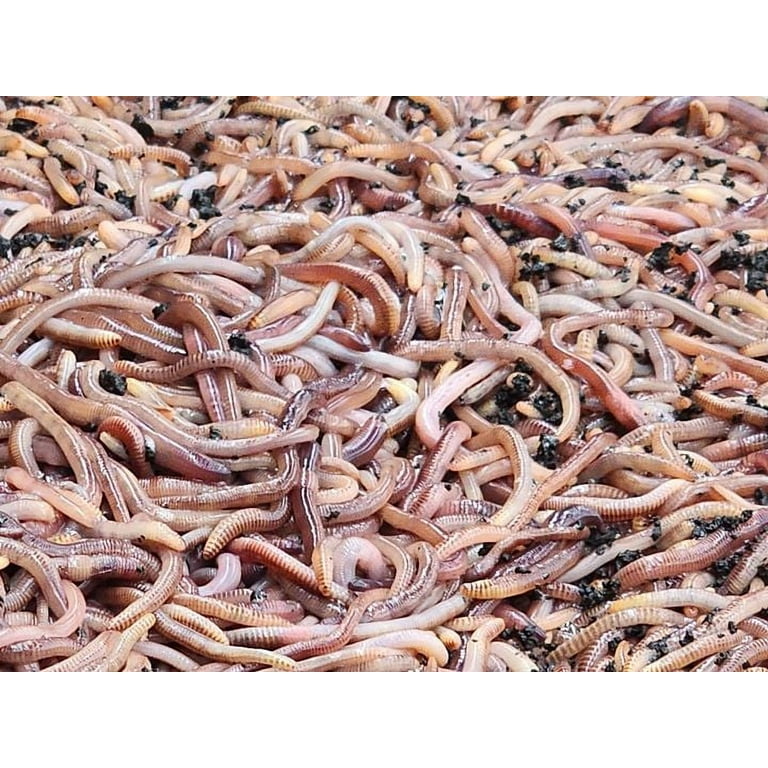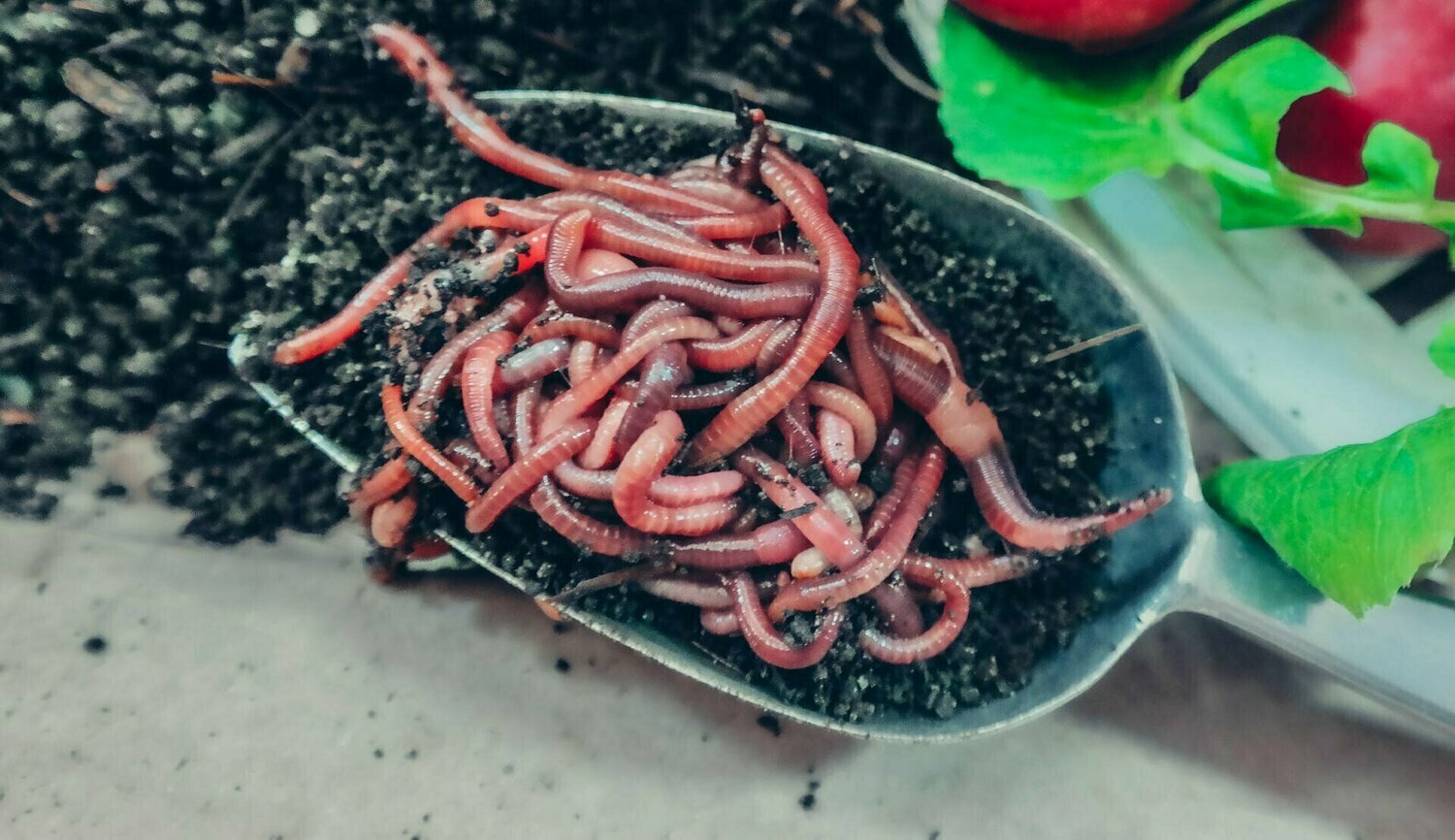Everything You Need to Learn About Red Wigglers for Composting
Red wigglers, or Eisenia fetida, play a critical role in the realm of composting, changing organic waste right into useful dirt changes. Their unique organic qualities allow them to grow in various problems, making them a suitable selection for both amateur and experienced composters alike. Understanding their demands and advantages is crucial for establishing an effective vermicomposting system. However, the process of setting up a worm container and keeping it can posture challenges. To successfully harness the possibility of these worms, one have to discover the details of their treatment and monitoring.
What Are Red Wigglers?

(red wiggler worms)
Indigenous to The United States and copyright, red wigglers are surface-dwelling organisms that favor damp, cozy habitats rich in disintegrating natural issue. Their diet plan is composed primarily of rotting plant material, food scraps, and various other organic debris, which they take in and break down successfully. As they absorb this material, they create nutrient-rich castings that boost soil fertility.
Red wigglers are hermaphroditic, having both male and women reproductive organs, and can replicate quickly under optimal problems. Generally, red wigglers are vital factors to the process of recycling organic waste right into beneficial garden compost.
Benefits of Using Red Wigglers
Making use of red wigglers in composting systems supplies countless benefits that enhance both the efficiency of waste monitoring and the top quality of the resulting garden compost. These worms, clinically called Eisenia fetida, are particularly effective at damaging down organic issue, transforming kitchen area scraps and yard waste into nutrient-rich garden compost at an accelerated rate.
Among the main benefits of using red wigglers is their capability to eat large quantities of organic material, often processing their weight in food waste daily. This high intake price causes quicker decomposition and reduces the volume of waste sent to garbage dumps. The spreadings produced by red wigglers are abundant in essential nutrients, valuable microorganisms, and enzymes, making them an outstanding plant food for gardens and plants.
In addition, red wigglers prosper in a variety of environments, making them versatile for both interior and exterior composting systems - red wigglers. Their visibility in a garden compost container assists to aerate the material, avoiding odors and promoting a healthy composting process. Generally, utilizing red wigglers not just adds to reliable waste monitoring yet additionally supports lasting horticulture methods through the manufacturing of top notch compost
(eisenia fetida worms for sale)
Setting Up Your Worm Bin
To efficiently establish a worm bin, it is important to select an appropriate container that fulfills the requirements of red wigglers while supplying a conducive setting for composting. An appropriate bin can be made from plastic, wood, or steel, with an ability of at the very least 1 square foot for each extra pound of worms.
Make sure the container has appropriate water drainage holes to stop excess wetness, as red wigglers thrive in a moist, yet not waterlogged, atmosphere. red wigglers. The container should likewise be aerated to supply adequate air movement, avoiding anaerobic problems that might harm the worms
A suitable area for the worm bin is a cool, dark location, devoid of straight sunlight and severe temperatures, as red wigglers prefer a temperature level series of 55 to 77 degrees Fahrenheit.
Prior to presenting the worms, prepare bed linens products such as shredded paper, cardboard, or coconut coir, which will certainly provide both habitat and food. Moisten the bedding lightly to develop a welcoming environment for the worms. Last but not least, take into consideration placing a cover on the container to keep humidity and minimize insects, while guaranteeing it can be easily eliminated for upkeep.
Feeding and Care Guidelines
Feeding red wigglers is a critical element of preserving a healthy composting system. These worms flourish on a varied diet, primarily composed of natural materials such as vegetables and fruit scraps, coffee premises, and smashed eggshells. It is vital to avoid feeding them meat, dairy products, and oily foods, as these can produce unpleasant smells and attract bugs.
When presenting food to your worm bin, chop or shred products into smaller sized items to promote quicker decomposition. Beginning with small amounts to evaluate the worms' usage rate, slowly enhancing the amount as they adjust. It is a good idea to alternative feeding locations within the bin to urge extensive blending and aeration of the garden compost.

Troubleshooting Common Issues
Maintaining a flourishing worm composting system can sometimes present challenges that need focus and troubleshooting. Usual concerns consist of an undesirable odor, which typically suggests overfeeding or the visibility of anaerobic conditions. To correct this, minimize the quantity of food added and ensure appropriate oygenation by mixing the bed linen product.
Another regular problem is the escape of worms from the container. This can occur as a result of too much dampness or unsuitable ecological conditions. Frequently inspect the moisture degrees, intending for a damp however not soaked consistency, and preserve ideal temperatures in between 60-80 ° F(15-27 ° C )to develop a comfy habitat for your red wigglers.
Insects, such as fruit flies, can likewise invade worm containers. red wigglers. To combat this, cover food scraps with a layer of bed linens or shredded paper to deter flies from laying eggs. Additionally, make certain that any type of food added is fresh and devoid of mold and mildew, which can attract unwanted parasites
Finally, if your worms seem non-active, examine for anxiety variables such as temperature level changes or insufficient dampness. Dealing with these usual concerns will aid maintain a healthy and productive worm composting system.
Final Thought
In summary, red wigglers, or Eisenia fetida, play an important function in sustainable waste administration with vermicomposting. Their capability to effectively transform organic waste right into nutrient-dense castings improves dirt health and advertises plant growth. Correct setup and upkeep of a worm Where To Buy Worms In North Carolina container, in addition to adherence to feeding standards, make certain a thriving community that minimizes land fill contributions. Resolving typical concerns without delay additionally sustains the effectiveness of this eco-friendly method, contributing to environmental sustainability and farming productivity.